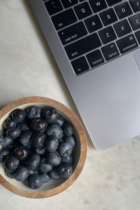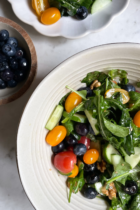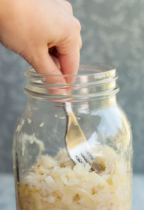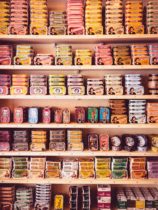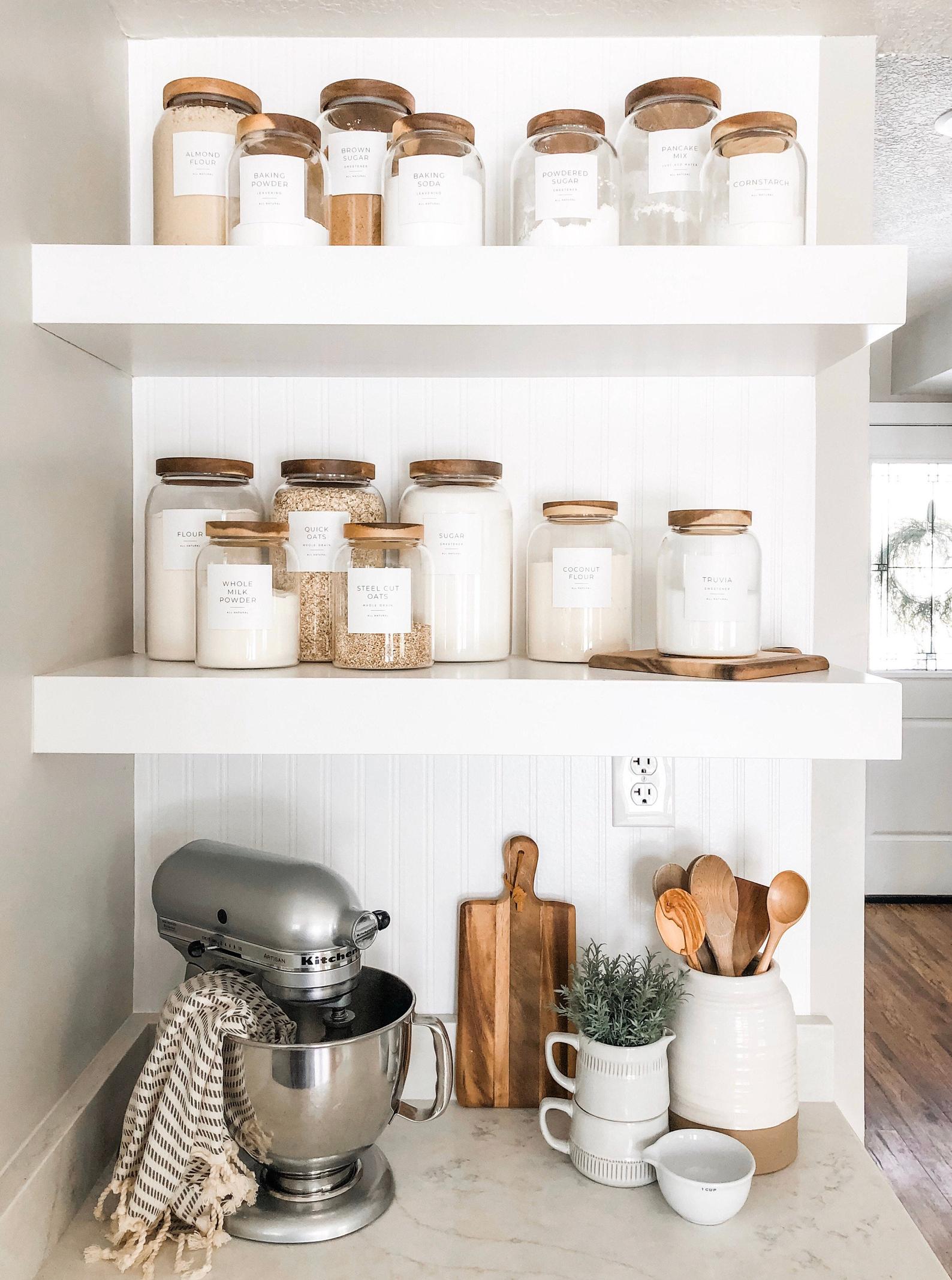
Over the last couple of years we’ve all become more conscious of the way we consume, making simple swaps to reduce our personal carbon footprint. Whether it’s ditching the plastic straws for metal ones, or bringing our own tote for grocery shopping, or carrying a water bottle rather than purchasing bottled water all the time; we’re all learning that there are so many ways to be mindful in our daily lives. This same mindfulness should extend to the kitchen too. Whether that’s reducing food wastage, cutting down on disposable containers from endless nights of takeout, or not neglecting vegetables sitting in your refrigerator until they get thrown out – we could all make a little more effort in our kitchens. Not only will it help the environment, but it will also help you make more nutritious meal choices, and benefit your pocket!
One way to do your bit is to plan and create your meals based on what you already have at home, or “shelf cooking,” as coined by popular YouTube personality Jordan Page.
What is shelf cooking?
Shelf cooking means that you first take stock of your pantry and refrigerator to see what items you have on hand, and plan your meals around those items ahead of time. Then, you only shop for whatever little is needed to supplement them.
Why does this matter?
Raise your hand if you’ve done this: You wanted to cook dinner, looked online for a recipe you like, and headed to the grocery store to get every single item on the list.
I have. Just the other day, I came across a recipe for pesto pasta that I wanted to recreate. I promptly went to the store and bought all the ingredients precisely as the recipe required. If I had just looked into the pantry first, I could have saved the trip (and money!). I could have made the same recipe with slight variations: substituted rigatoni with the penne already in my pantry, and used the nuts that were already in my freezer albeit hidden amongst stacks of ice trays and frozen peas.
Shelf cooking results in a few things: While shopping without planning first, we are often unaware of what we already have and keep buying more which ultimately leads to wastage and spoilage. By making sure we look into our pantries first, we minimize wastage and use the ingredients we’ve already bought. Also, when we shop according to a specific recipe (specially when the recipe has 3 obscure ingredients we’ll never use again), we end up buying things we don’t have much use for. With shelf cooking, we can plan all our meals so we don’t panic about what to cook at dinnertime, make better food choices, and also end up saving money.
Now, as Indians, your mothers and grandmothers have probably always had the habit of keeping a stocked pantry, so the concept of shelf cooking isn’t wholly new. Think back to the times when your Grandma would call for the entire month’s “ration” in one go, and supplement it with fresh produce as and when needed. Or when they stored fresh seasonal produce to be used throughout the year, in turn avoiding the purchase of the chemical-filled store alternative. However, over the years, such practices have diminished, as it isn’t necessarily “easy.” Keeping a stocked pantry is one thing, but actually meal planning to make sure everything in it is used up can become challenging.
The first step is to start with a stocked pantry, and then get into the habit of meal planning. Once you make this initial effort, shelf cooking is an excellent way to prepare meals quickly.
How to stock your pantry with the essentials:
- Dry Stores: These are your basics – rice, lentils, pulses, beans, pasta, grains, oats, millets, noodles etc. These also include things like flour, whole-wheat flour, and bread.
- Oils and Vinegars: Neutral cooking oil, extra-virgin cooking oil, ghee, and a vinegar or two, depending on what kind of food you cook often.
- Canned or Frozen Goods: It’s good to have some shelf-stable stuff like canned beans, vegetable broth, frozen peas and corn, olives, jalapenos, baked beans etc.
- Spices: A staple in every Indian kitchen, having a well-stocked spice cabinet can make such a huge difference in your cooking. Apart from ground spices, consider having a few whole spices like cinnamon and black pepper too. You can also add specialty spices like taco seasoning, tandoori seasoning, za’atar, and other blends depending on the kind of recipes you make more often.
- Sweeteners: Sugar, honey, maple syrup
- Dairy: Milk, cheese, butter
- Extras: Nuts, nut butters, seeds, dried fruit like dates, tahini, sauces and condiments, preserves and pickles
- Meat, Fish, Eggs
- Produce: Onions, garlic, ginger, potatoes, carrots, tomatoes, limes are essential, and you can supplement with whatever fresh veggies and fruits that are in season. Having herbs is also a great way to add flavor to dishes.
- Baking: If you enjoy baking, then include baking staples like vanilla extract, chocolate chips, baking powder, sugars etc. in your pantry.
Once you have your pantry stocked with essentials, you can use supplemented with fresh produce to make a variety of meals. Also check out this produce storage guide to make your fresh produce last longer. Here are a few ideas:
- For example, with rice you can make a quick stir-fry, adding whatever veggies (and an egg) you have in the fridge. You could also use the same rice to make risotto, or take the sweet route with some rice pudding! The rice can also become a base to soak up a flavourful dal (also from your pantry), or a quick vegetable stew.
- Similarly, beans and legumes can be used to make hummus, dal, curries, soups, burger patties, and stews. You can also roast chickpeas and have them as a snack, or add them to salads for crunch.
- If you have a can of coconut milk (which is more shelf-stable than regular milk), you can sauté whatever veggies you have with spices (also from your pantry) and turn it into a quick curry. You can use the coconut milk as a creamer for your daily coffee, for overnight oats, and to blend smoothies.
- When you have too many odd bits of a variety of vegetables left in your refrigerator, you can roast them together to make a Buddha bowl with any grain + dressing of your choice. Alternatively you can make a soup or stew. If you have fresh salad greens, add all the veggies with a dressing to make an “everything but the kitchen sink” style salad, or toss them with pasta/noodles for a pantry cleanout pasta.
These are just examples, but with a little creativity and planning, shelf cooking is something that everyone can try at home. It’s perfect for when dinner ideas have dwindled, and ordering out becomes an easy alternative. To start, take stock of what you have at home, and brainstorm recipe ideas around it. Websites like Super Cook and All Recipe allow you to input what you have in your home and find a recipe around it. You could also search our site using keywords, for example, “pasta,” or “quinoa,” or “tofu” to find recipe inspiration. When you already have a meal plan in place and know exactly what you’re going to cook (maybe you’ve even meal prepped before hand), there are fewer chances of you giving in to the takeout temptation. And by cooking our meals at home, we are in complete control of what goes into our body and how healthy/unhealthy we eat.
To motivate yourself to follow through, treat shelf cooking as a challenge. The rules vary from individual to individual, but the basic concept remains the same: You are allowed only to use what is at home for a select number of days/weeks. You may allow yourself a budget for fresh produce, but even then it is essential to stick to the budget.
And yes, while cooking from the pantry is a part of the sustainable movement, present times have made it the need of the hour. With the novel coronavirus Covid-19 affecting how we move, shelf cooking has become essential. We need to stay home and self-quarantine as much as possible, which means going out to buy missing elements for your lunches or dinners is out of the question. Relying on food delivery services is also not the best idea –for the safety of others who are risking their health to deliver your food, and also for your health and wallet. This is when meal planning, smart grocery buying, and cooking with what we already have at home is the new norm.

